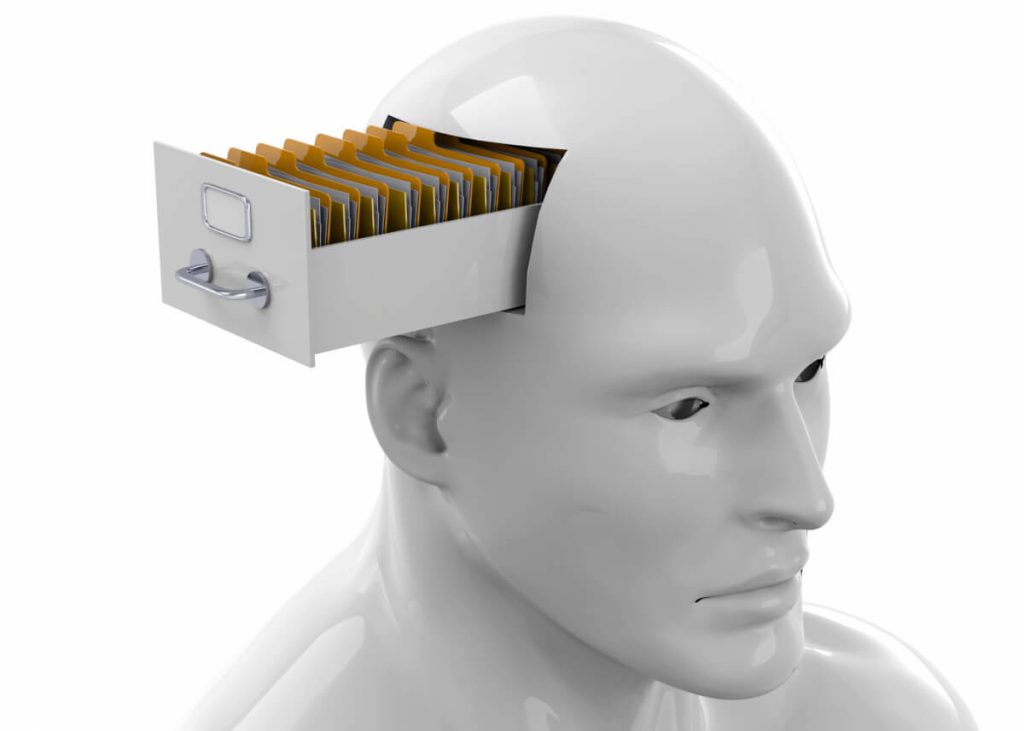

Your brain learns patterns through your experiences to create timelines. (McCarony/Shutterstock)
Neurons replay the past to predict the future
In a nutshell
- Scientists observed individual brain cells learning and encoding patterns of experience, revealing how neurons create “mental maps” of time and sequences
- The brain uses similar mechanisms to track time as it does to navigate space— specialized neurons gradually adapt to recognize temporal relationships between events
- When neurons learn these patterns, they maintain their new firing behavior even after sequences become random again, and can rapidly “replay” learned sequences during rest periods
LOS ANGELES —Time flows as a constant stream of moments, but your brain sees patterns in this flow. Now, scientists have discovered exactly how individual neurons learn to recognize and predict these patterns, providing the first direct evidence of how our brains map out the structure of time.
The study, published in Nature, was conducted by researchers at UCLA Health. It required recording the activity of individual neurons in patients who had electrodes implanted in their brains for epilepsy treatment. These recordings offer a rare glimpse into how individual brain cells behave during learning and memory formation—something that’s impossible to observe with standard brain imaging techniques.
“Recognizing patterns from experiences over time is crucial for the human brain to form memory, predict potential future outcomes, and guide behaviors,” says Dr. Itzhak Fried, director of epilepsy surgery at UCLA Health, in a statement. “But how this process is carried out in the brain at the cellular level had remained unknown – until now.”
Prior to the main experiment, researchers needed to identify which images would trigger strong neural responses in each participant. They showed participants about 120 different pictures over 40 minutes, including images of celebrities, landmarks, and other subjects chosen partly based on each person’s interests. Based on how brain cells responded, researchers selected six specific images for each participant to use in the main experiment.


The main study had three phases. In the first phase, images appeared in random order while participants performed simple tasks, like identifying whether the person shown was male or female. During the middle phase, images appeared in sequences that followed specific rules, though participants weren’t told about these rules. Instead, they focused on a new task: determining whether each image was shown normally or in a mirror image. The final phase returned to random sequences and the original gender identification task.
The sequence rules were based on what researchers called a pyramid graph. Six points were arranged in a triangle shape, with each point representing one of the selected images. Lines connected certain points, indicating which images could appear after others. Some images were directly connected, like neighboring points on the graph. Others required taking an indirect path through multiple points to get from one to another.
What makes this study particularly fascinating is that it revealed how individual neurons adapted as participants became familiar with these sequences. At first, a neuron would respond strongly to just one specific image. But over time, these same neurons began responding to images that frequently appeared close together in the sequence, essentially mapping out the temporal relationships between different images.
The brain’s ability to encode these temporal patterns shares remarkable similarities with how it represents physical space. Previous research discovered that certain neurons act as “place cells,” firing when an animal reaches specific locations, while others function as “grid cells” that help measure distances. The new study shows the brain uses comparable mechanisms to map out sequences of events and experiences.


This research also builds on earlier discoveries about “concept cells,” neurons that respond to specific individuals, places, or objects. These specialized brain cells appear to be fundamental building blocks of memory. The new findings show how these neurons work together to create structured representations of our experiences through time.
The researchers discovered that this neural mapping created what they call a “successor representation,” a predictive map that considers not just immediate connections but likely future events. Rather than simply linking one moment to the next, your brain builds a broader model of likely future possibilities based on learned patterns.
“This study shows us for the first time how the brain uses analogous mechanisms to represent what are seemingly very different types of information: space and time,” explains Fried. “We have demonstrated at the neuronal level how these representations of object trajectories in time are incorporated by the human hippocampal-entorhinal system.”
During breaks between testing phases, researchers observed “replay” events, moments when neurons would rapidly rehearse the learned sequences in a compressed timeframe. This neural replay happened in milliseconds, suggesting a mechanism for consolidating learned patterns into memory.
Understanding how the brain encodes temporal patterns goes beyond basic science. The findings could help develop new treatments for memory disorders and advance the design of brain-computer interfaces. They may also inform artificial intelligence systems that aim to process sequential information in ways that mirror human cognition.
Paper Summary
Methodology
The study used a clever multi-phase design to observe how neurons learn temporal patterns. First, researchers identified which images triggered strong neural responses in each participant through a screening phase showing 120 different pictures. They then selected six images per participant for the main experiment. The study consisted of three phases: pre-exposure with random sequences, exposure phases where images followed specific rules based on a pyramid graph, and post-exposure returning to random sequences. Participants performed simple tasks like gender identification or detecting mirrored images, while researchers recorded activity from individual neurons through implanted electrodes. This experimental setup allowed researchers to observe how neural responses changed as participants unconsciously learned the underlying pattern structure.
Results
The study revealed several important findings. Individual neurons that initially responded strongly to single images began responding to multiple images that often appeared close together in sequences. The brain’s representation of these temporal patterns matched a “successor representation” that encoded not just immediate connections but likely future states. These neural patterns persisted even when sequences became random again, showing lasting learning had occurred. Researchers also observed rapid “replay” of learned sequences during rest periods, suggesting a mechanism for memory consolidation.
Limitations
While groundbreaking, the study has some inherent limitations. All participants were epilepsy patients with implanted electrodes, which might not perfectly represent typical brain function. The sample included 17 patients across 21 recording sessions – a substantial number for this type of invasive recording but still relatively small for broader generalizations. The temporal patterns used were necessarily simpler than the complex sequences we encounter in daily life. Additionally, participants demonstrated limited explicit knowledge of the underlying patterns, suggesting the learning was largely unconscious.
Discussion and Takeaways
This research provides unprecedented insight into how individual human neurons encode temporal patterns. The findings demonstrate striking parallels between how the brain represents spatial and temporal relationships, suggesting common neural mechanisms for mapping both domains. The discovery of persistent neural changes and replay events helps explain how the brain consolidates and maintains learned patterns. These insights could inform development of memory enhancement devices and artificial intelligence systems designed to process sequential information more like the human brain.
Funding and Disclosures
The research was supported by the Marie Sklodowska-Curie fellowship, National Institute of Neurological Disorders and Stroke grants, and the Foundation for Science and Technology. The study was conducted at UCLA Health, with Dr. Itzhak Fried serving as senior author and Pawel Tacikowski as lead author, working alongside co-authors Guldamla Kalendar and Davide Ciliberti.
Publication Information
“Human hippocampal and entorhinal neurons encode the temporal structure of experience” was published in Nature, Volume 635, on November 7, 2024. The research represents a collaboration between UCLA, Karolinska Institute, and the University of Coimbra.








